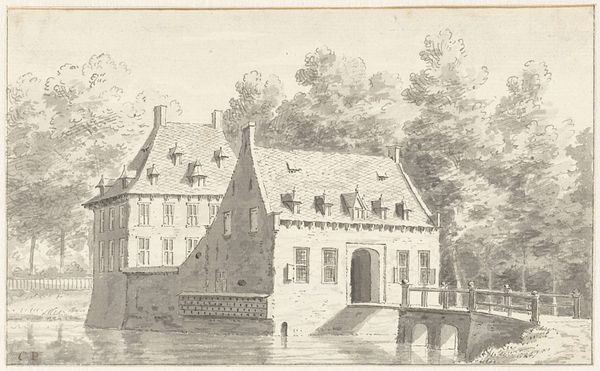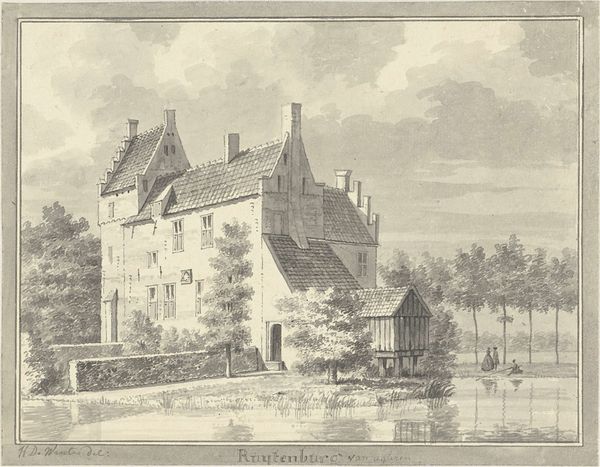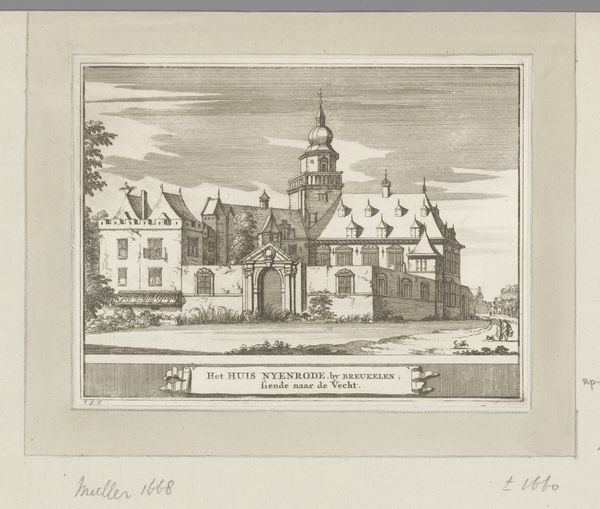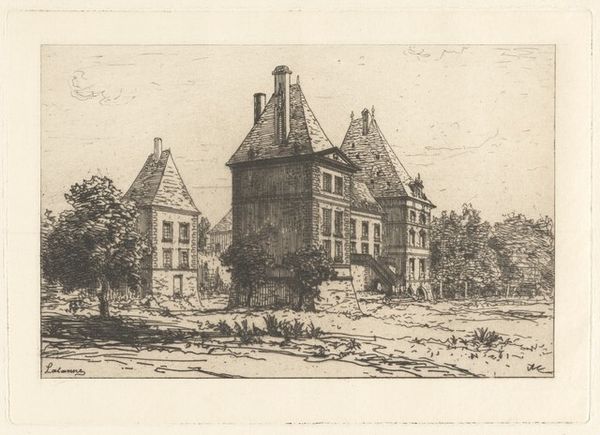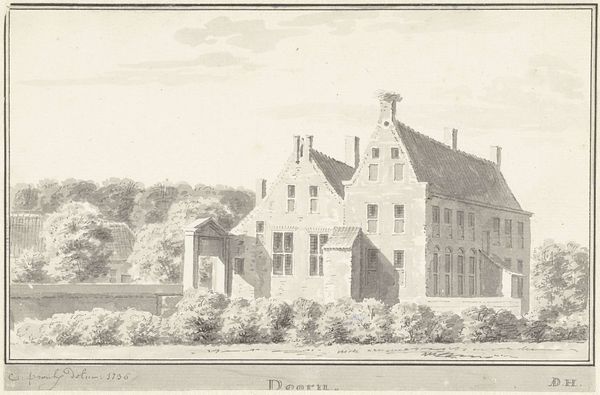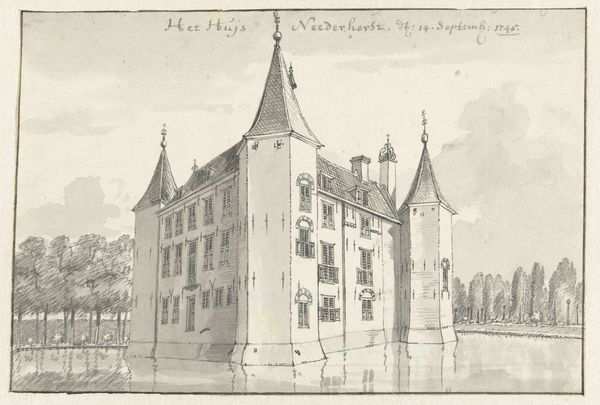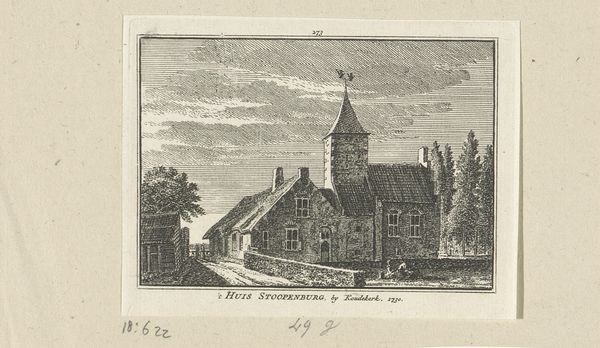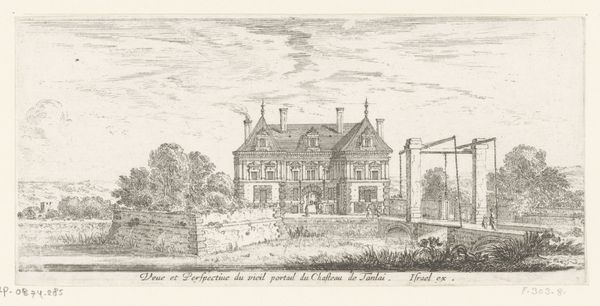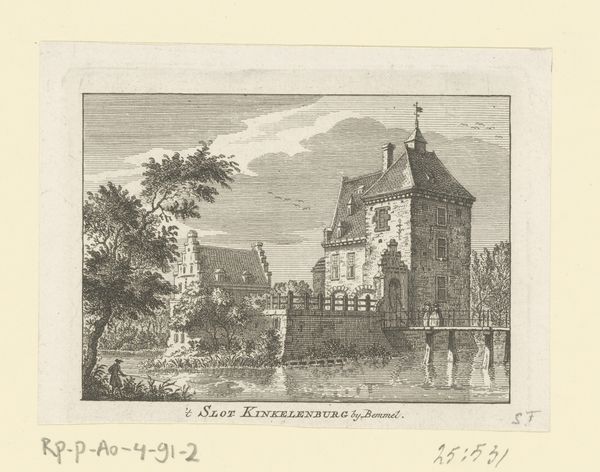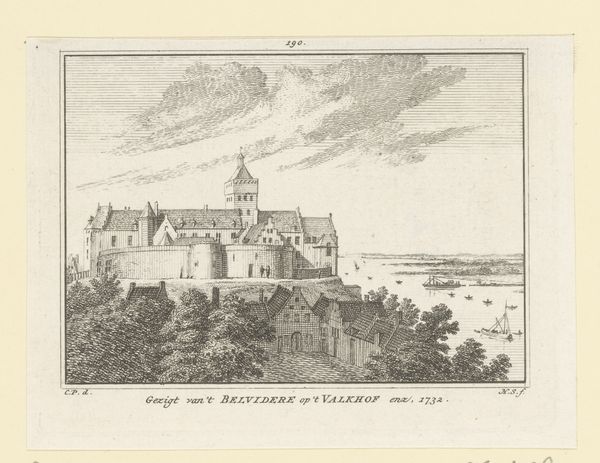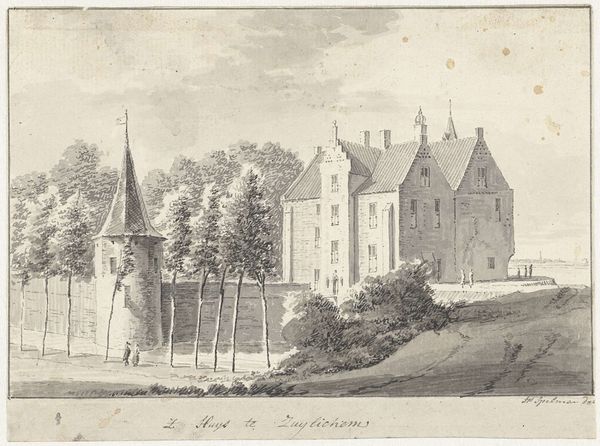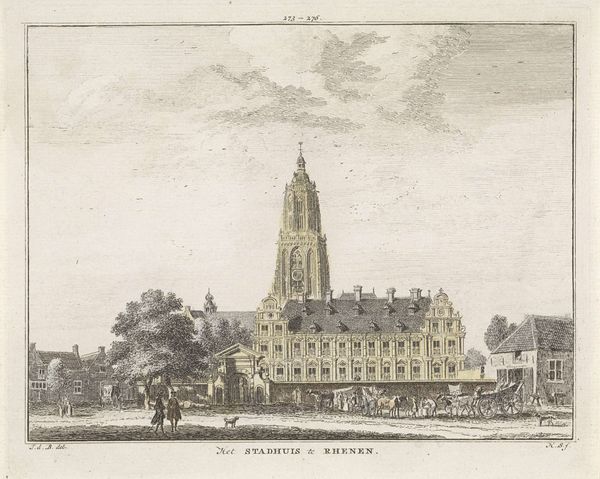
drawing, paper, ink, architecture
#
drawing
#
baroque
#
dutch-golden-age
#
landscape
#
paper
#
ink
#
architecture
Dimensions: height 138 mm, width 182 mm
Copyright: Rijks Museum: Open Domain
Editor: This is Cornelis Pronk’s "Het huis Vredestein bij Ravenswaaij, Gelderland," a drawing from 1728 rendered in ink on paper. There's a remarkable stillness to this image. What sociopolitical meanings were embedded in these architectural portrayals, considering the artist's role in visualizing power and status? Curator: Absolutely, it’s crucial to unpack the layers within what might initially appear as a simple landscape drawing. Pronk was essentially commissioned to document the estates of the wealthy, but it goes beyond mere record-keeping. This piece, and others like it, subtly reinforced a hierarchy of power during a time of immense social stratification in the Netherlands. How do you see the architectural details contributing to this representation of power? Editor: Well, the symmetry, the meticulously planned gardens, the sheer scale of the house – it all conveys a sense of control and dominion over the landscape. It speaks to the owner's wealth but also their ability to impose order. Does this idealized portrayal serve to normalize and even legitimize social inequalities? Curator: Exactly. These images functioned within a network of patronage and influence, presenting an image of the Dutch Golden Age that often masked the realities of colonialism, trade exploitation, and stark class differences. Think about how the “golden age” was only golden for some. Did Pronk have a responsibility to show a more critical viewpoint? Editor: I suppose his position as a commissioned artist made direct critique difficult, but the absence of any sign of labor or social unrest, that seems significant, and not accidental. It raises questions about artistic agency. It makes me consider art's role as a tool of the establishment and social reform. Curator: Precisely. By viewing art from this era through a lens of social and political critique, we can better understand how power operates within visual culture. Editor: This was quite thought-provoking. Thank you! Curator: My pleasure, it's always illuminating to reconsider these historical depictions with fresh eyes.
Comments
No comments
Be the first to comment and join the conversation on the ultimate creative platform.
